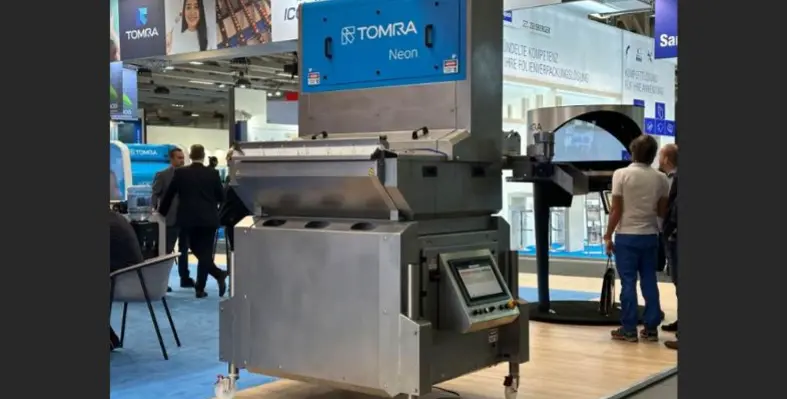The new TOMRA Neon, a new blueberry pre-grader with sophisticated AI technology, brings overall value to the blueberry business model
AI for better machine harvesting techniques
Although machine harvesters are faster and less costly than manual picking, they also harvest debris and fruit clusters which cause disruption on packhouse production lines.
The new TOMRA Neon allows Blueberry growers to automatically process machine harvested blueberries for the fresh market.
By employing artificial intelligence modelling, TOMRA Neon detects clusters with unrivalled accuracy. Because it is compact, durable, and easy to clean, it fits perfectly into any processing and packing line
Recognising the challenge
Blueberry picking by hand is labour-intensive and demands extended periods of time spent in the field by pickers. People no longer desire to perform the exact type of physically taxing, monotonously repetitive work that this involves. Because of this, growers are finding it more and more difficult to find and hire seasonal harvesting workers, which has sped up the adoption of automated harvesting.
But in the same manner that humans see and perceive blueberries on bushes, machines cannot. Unripe or clustered fruit is also picked by machines. TOMRA Food identified the need to assist clients in transitioning to machine harvesting, adding value by lowering labour requirements, while maintaining providing the highest quality product to the consumer by collaborating closely with blueberry growers and packhouses.
The engineers at TOMRA drew heavily on their experience in creating the company's LUCAi AI technology, an optional add-on for the KATO260 that provides unparalleled precision in fruit classification and grading, to attain the requisite technical sophistication. LUCAi makes advantage of Deep Learning, a technique that TOMRA will expand to other applications. Deep Learning uses pre-trained models to teach computers how to comprehend data, such as intricate patterns in images.
Over the course of two and a half years, TOMRA Neon was tested and verified in both North America and New Zealand under various machine-harvesting settings. The controlled, early release and sale of ten machines to TOMRA clients during the 2023 season marked the culmination of these testing. Because of this, TOMRA Neon's mechanical setup, AI algorithms, and software have all been improved based on millions of kilograms of machine-harvested blueberries in commercial settings.
Extensive validation testing has demonstrated that TOMRA Neon eliminates over 90% of green and red berries and over 95% of clusters, optimising optical grader efficiency. Furthermore, TOMRA Neon operates at a throughput capacity of up to 500 berries per second because of its special ejection manifold. The KATO260 can operate at maximum efficiency even with fruit removal as high as 40% when an output speed of up to 280 berries per second is maintained.





